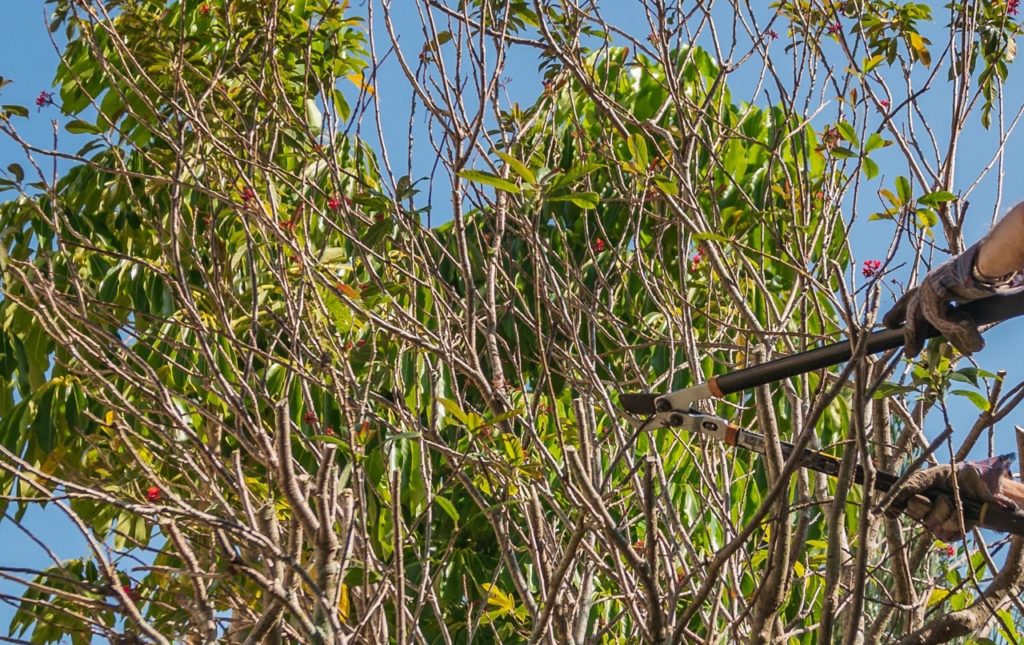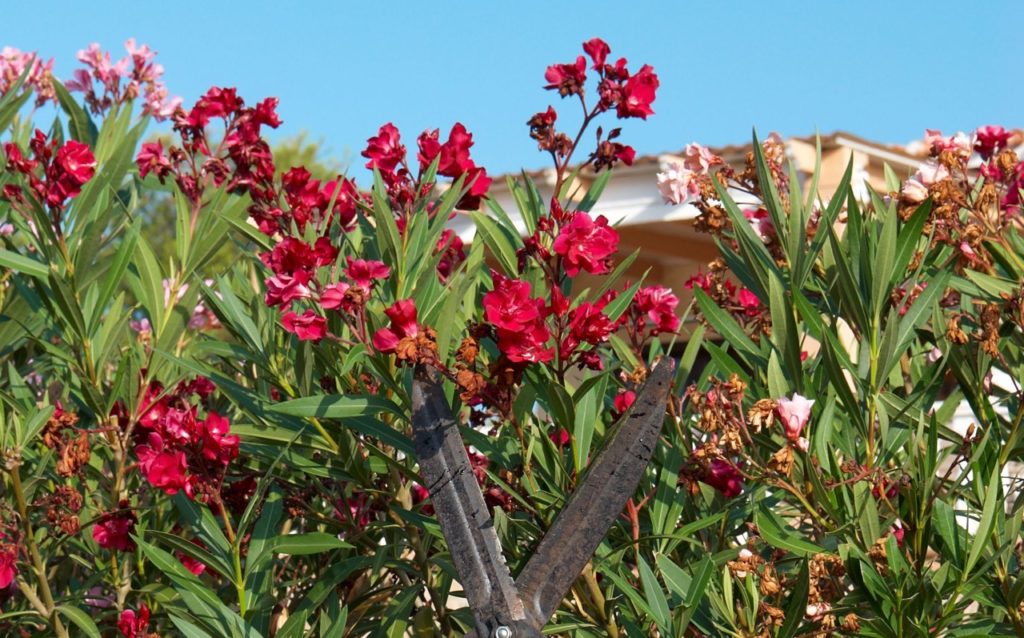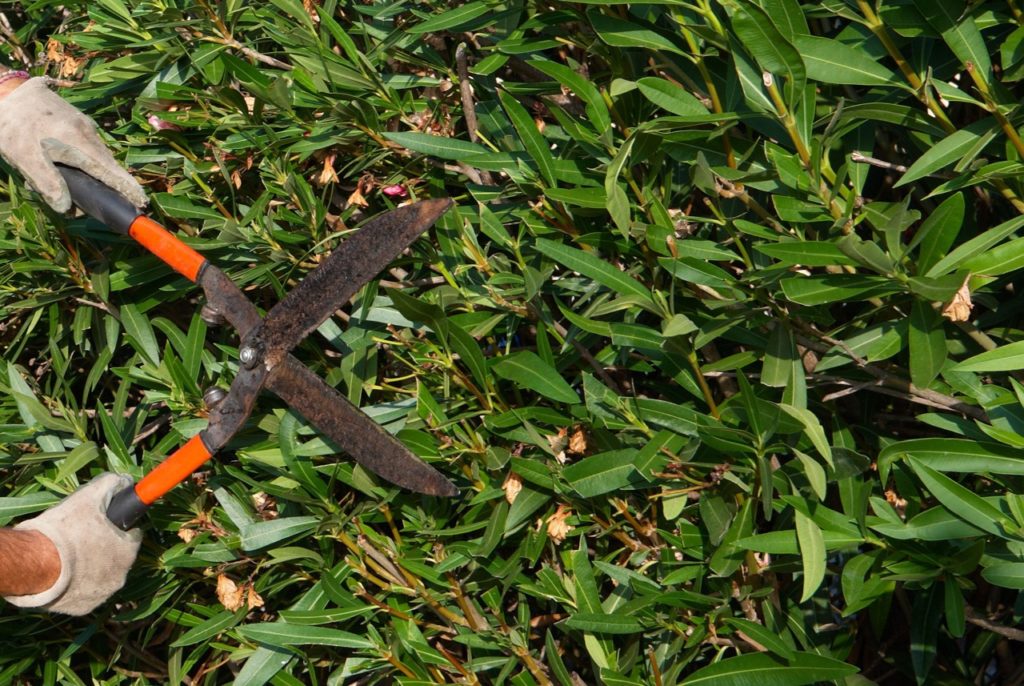Pruning Oleander Out Of Season Can Devastate Your Plant – Here’s How To Do It Right

Reviewed By DAN ORI

Dan has over 27 years’ under his belt caring for plants and gardens. Working as a Horticultural Instructor and Consultant, he draws on a diverse range of experience that includes working as a Head Gardener, Tree Surgeon, Garden Centre Trouble Shooter, and writer of academic papers. Dan has a Level 3 Diploma in Horticulture and is currently a candidate for the RHS’s most prestigious award – The Master of Horticulture.
OLEANDER GUIDES
This lovely evergreen features narrow greyish-green or sea-green leaves and bears little salver-shaped flowers in terminal clusters all throughout summer and beyond.
However, if you prune oleander out of season in the UK, the plant can get into serious trouble and even struggle for survival.
On the other hand, in the right season, an oleander bush will not be harmed one bit by even a severe prune.
You don’t have to prune these low-maintenance evergreens.
Pruning, however, will significantly enhance flowering and will keep the bush’s shape neat and tidy, and here’s how to do it:
- Remove any dead or damaged branches from the plant.
- Deadhead any spent flowers as and when they appear.
- Prune in the Autumn – after flowering but before the first frost.
- Make any final adjustments with your final spring touch-ups.
Each step of this process is explained in more depth below.
| Difficulty | Medium |
| Equipment Required | Gardening gloves, secateurs, pruning shears |
| When To Prune | Autumn |
1) Remove Damaged Branches

Any branches that have died, become bare or have been damaged by pests or breakage should be pruned when observed, anytime from spring to autumn.
You may also want to prune an excessively long, protruding, or unsightly branch.
Using pruning shears, cut a branch right at its attachment to the main stem or origin branch.
2) Deadhead
A short time into the blooming season, flowers will start to fade and wither.
Simply twist or snip off these spent blooms.
Often, most of the flowers in a terminal cluster will be wilted and spent.

You may as well remove these clusters entirely at their attachment or just above the branch’s node.
Deadheading will, at least to some extent, spur fresh blooms.
It will also keep the bush looking neat and improve aesthetics.
3) Autumn Pruning
Timing is crucial if you need to prune oleanders in autumn.
Do so as soon as possible after the flowering season ends and well before the first frost.
Mid-to-late September is usually best.
As these evergreens are not winter-hardy, early pruning will allow fresh growth ample time to emerge so that the plant is well set with foliage before the onset of winter.

I do not recommend severe pruning, and would suggest that you instead prune for maintenance.
This shrub, like many evergreens, flowers on new growth, and to foster such new growth you will need to cut off branch tips.
Make the cut just above the node immediately below a terminal cluster of leaves.
Cut from half to two-thirds of the branches in this manner all over the bush.

You can trim branches by greater lengths if you wish, and doing so will promote side shoots and bushiness with a narrower profile.
Be sure to make the cut no more than halfway down the branch and to make it just below a node.
Prune only a limited number of branches in this fashion.
“Oleander may survive a hard prune in a sheltered spot, but be warned that it will normally take a few years to flower abundantly after a hard prune and it will also be more susceptible to cold damage,” says Dan Ori, a Master Horticulturist.
4) Spring Touch-Ups
Soon after the shrub starts growing strongly in spring you can opt to make a couple of adjustments.
If your oleander is insufficiently bushy and if you see fresh shoots sprouting upwards, you may pinch or trim them to halt such growth.
This will trigger lateral growth.

If the plant, be it open-ground or pot-grown, exhibits any frost-damaged branches, prune them at their attachments.
If you have open-ground oleander, you might spot suckers spreading around the bush.
If you do, you can dig down under the sucker and pull or tear it off, taking care not to damage the roots of the mother plant.
Doing so will re-direct the plant’s energies towards flowering from early summer.

